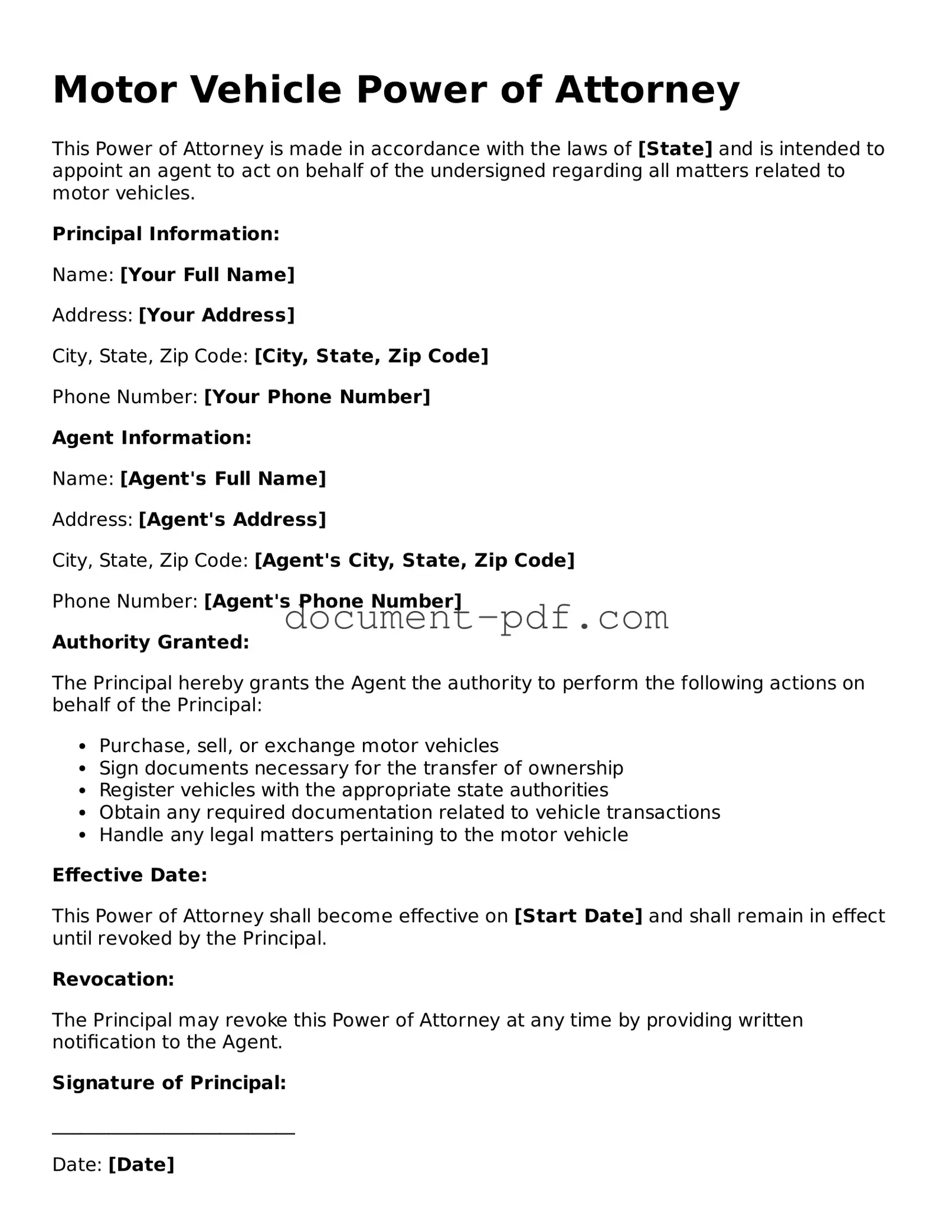Motor Vehicle Power of Attorney
This Power of Attorney is made in accordance with the laws of [State] and is intended to appoint an agent to act on behalf of the undersigned regarding all matters related to motor vehicles.
Principal Information:
Name: [Your Full Name]
Address: [Your Address]
City, State, Zip Code: [City, State, Zip Code]
Phone Number: [Your Phone Number]
Agent Information:
Name: [Agent's Full Name]
Address: [Agent's Address]
City, State, Zip Code: [Agent's City, State, Zip Code]
Phone Number: [Agent's Phone Number]
Authority Granted:
The Principal hereby grants the Agent the authority to perform the following actions on behalf of the Principal:
- Purchase, sell, or exchange motor vehicles
- Sign documents necessary for the transfer of ownership
- Register vehicles with the appropriate state authorities
- Obtain any required documentation related to vehicle transactions
- Handle any legal matters pertaining to the motor vehicle
Effective Date:
This Power of Attorney shall become effective on [Start Date] and shall remain in effect until revoked by the Principal.
Revocation:
The Principal may revoke this Power of Attorney at any time by providing written notification to the Agent.
Signature of Principal:
__________________________
Date: [Date]
Witness:
__________________________
Date: [Date]
Notary Acknowledgment:
State of [State]
County of [County]
On this [Date] before me, a notary public, personally appeared [Your Full Name] who proved to me on the basis of satisfactory evidence to be the person(s) whose name(s) is/are subscribed to this Power of Attorney.
__________________________
Notary Public Signature
My Commission Expires: [Expiration Date]
